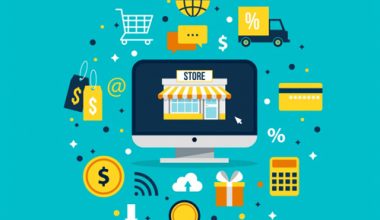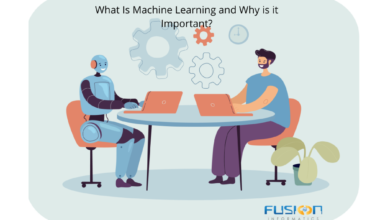We’ve already come to rely on AI for everything from driving our cars to translating our emails. But as powerful as these systems are, they still have a long way to go when it comes to understanding language and making predictions with any real depth.
This is a lack of foresight, which refers more generally to how computers can’t make predictions about their inputs based on data that hasn’t happened yet (i.e., there’s no such thing as proactivity).
Fortunately for us humans who crave such things from technology in this fast-paced digital age, researchers at Google Brain came up with an ingenious solution: self-supervised learning.
What is Self Supervised Learning?
Self-supervised learning is a machine learning method in which unlabeled data (data without labels) is used to learn the classifier. It is a form of unsupervised learning requiring less labeled data than traditional unsupervised learning methods.
Self-supervised learning can also be considered semi-supervised because it uses both labeled and unlabeled data to train the classifier, though how exactly this happens varies from model to model.
In self-supervised learning, an AI model is given a large amount of unlabeled data and asked to make predictions about the data. The model learns to make predictions by using the unlabeled data.
A common application of self-supervised learning is in natural language processing (NLP) tasks like machine translation and text summarization. In these NLP tasks, the goal is usually to train an AI model so that it can predict the next word in a sentence given some words from previous sentences.
For this task to be successful, however, we need a lot of examples that contain both unknown words and known words together for the AI model to learn how those two types of words interact with each other during prediction time.
What is the difference between self-supervised and unsupervised learning?
Computer algorithms are designed to learn from data, but there are two fundamental ways in which this can happen. In unsupervised learning, the algorithm generates some representation of the data for itself (e.g., clustering), whereas in self-supervised learning it uses existing labels as part of its training data.
The key distinction between unsupervised and supervised learning is that you do not tell your algorithm what to look for in unsupervised learning. instead, you just offer a dataset with no labels (or only one label if there is only one class). The machine can then find groups by itself:
Clustering: An algorithm will group similar items. For example, if we are given a dataset of users’ faces (but no information about who is male or female), clustering would put all females together and all males together.
This can be useful when trying to group products into similar categories based on their characteristics (such as price range) or grouping users by age range. Hence, you know how many people within each category need certain types of ads shown to them on social media platforms like Facebook or Instagram.
Classification: Classification is when an algorithm separates objects into two or more classes according to shared features — these could include colors or shapes.
In short, self-supervised learning is the type of data available to the algorithm. Where unsupervised learning starts from unlabeled data, self-supervised learning starts from a labeled dataset and uses the labels to create an additional dataset that is then used for training.
Also Read :
a subset of Artificial Intelligence (AI), the king of digital technology. A significant area of computational science, ML (Machine Learning), allows decision-making outside the realm of human interaction.
Why do we need self-directed learning?
- Self Supervised Learning arose as a result of the following concerns that persisted in other learning procedures:
- High cost: Most learning approaches necessitate labeled data. In terms of time and money, the expense of high-quality labeled data is too expensive.
- Long lifespan: The data preparation lifecycle is a time-consuming procedure in the development of ML models. Cleaning, filtering, annotating, reviewing, and reorganizing are all required per the training framework.
- Generic AI: The self-supervised learning framework is one step closer to incorporating human cognition into machines.
Self-supervised learning works by feeding the AI model unlabeled data and then later asking it to make predictions about this data.
Self-supervised learning is a type of machine learning that uses unlabeled data to train the model. The model is given a set of unlabeled data and is then asked to make predictions about this data.
Later, when the model is given the correct labels for this data, it can compare its predictions with those labels and learn how to improve those predictions in future iterations.
Self-supervised learning is a method of training an AI model using unlabeled data.
Self-supervised learning is a method of training an AI model using unlabeled data. This means that no humans classified the data; instead, the machine is responsible for recognizing patterns in the data alone.
Unlabeled data is any set of information that hasn’t been tagged or categorized by people. An example would be imaged on social media platforms like Instagram and Twitter—they have no caption attached to them, so they’re effectively uncategorized when you look at them as a whole (unless it’s labeled).
Therefore, these images can be used in self-supervised learning because there’s no human involved in labeling them (you just look at what’s there).
Conclusion
Self-supervised learning comes in handy when dealing with data-related problems. It can range from insufficient dataset preparation resources to time-consuming annotation issues.
It’s also helpful for Downstream Tasks, such as Transfer Learning. Models can be pre-trained on unlabeled datasets in a self-supervised way, and then fine-tuned for specific use-cases.
As a result of the first two considerations, it is clear that self-supervised learning is the preferred method for developing a scalable ML model. At the same time, one must be cognizant of the risks associated with utilizing this strategy.




